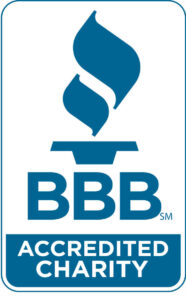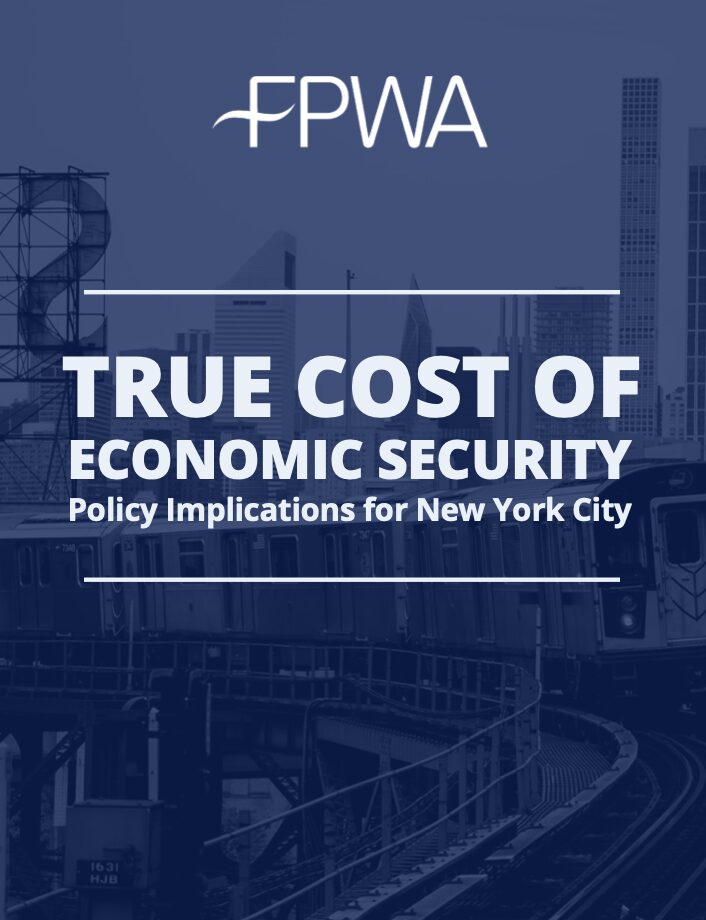FY 2025
New York City
Budget Analysis
On June 30, 2024, New York City passed its budget for fiscal year 2025 (FY25). While the $112.4 B budget is the biggest adopted in New York City history, the human services sector had mixed success in averting proposed cuts to vital services.
In a familiar dance, the series of cuts as part of the “Program to Eliminate the Gap” (PEG) were made in the name of fiscal responsibility, however history has shown that they only create undue strain on an already overworked and undervalued human services sector.
We are pleased that some of the proposed cuts were restored thanks to the tireless work of those championing the human services sector, including proposed cuts to affordable housing, libraries, and cultural services. Despite this, cuts to the Department of Social Services, CUNY, and parks risk further stifling economic security and well-being for New Yorkers.
In this analysis we explore what this means for our city’s human services sector, and for the economic security of millions of New Yorkers.
What it means for human services funding
Hover over the icon below to find out more
What it means for New Yorkers
Hover over an icon below to find out more
Housing
Income Supports
Food Security
Civil Rights Enforcement
Education
Parks & Culture
New New Yorkers
Overall Analysis of FY25 Budget
After months of negotiation, the Council and Mayor agreed to a $112.4B balanced budget. FPWA applauds the restoration of crucial funding to programs initially targeted for cuts, securing key investments in vital services for our city. But despite its size, the budget missed key opportunities to advance the economic security of New Yorkers, cutting funding to agencies that provide vital human services.
Economic pessimism threatened the city with steep austerity conditions, due to projections of reduced revenue as a result of a slowing economy and higher than average costs for additional services to asylum seekers. In light of these projections, the Administration considered mid-year cuts across agencies in the “Program to Eliminate the Gap”.
Yet despite this, the economy surpassed fiscal forecasts, with the city’s revenue outperforming projections and asylum seeker costs below OMB’s estimates. In the end, rather than a fiscal shortfall in FY24, New York City enjoyed a $3.8 B surplus. Projections by the IBO and City Council showed that city’s revenue projections were conservative and risked bringing about a self-fulfilling prophecy, where reduced government spending leads to further economic insecurity. Lower spending on social services has dire consequences to the city’s economy: it can lower employment, deepen poverty, and incentivize outmigration. While we acknowledge the uncertainty in any economic forecasts, we assert that the cuts were premature, and put the city at risk.
Human Services Do Not Receive Fair Share of Funding in Budget
While the FY25 adopted budget is large, many budget cuts were not fully restored from the last fiscal year, leaving New Yorker’s needs unmet. This is particularly apparent for agencies that provide human services, which have historically been undervalued in the budget process, as shown by FPWA’s New York City Funds Tracker.
Major funding was restored or increased to the Department of Aging (DFTA), Housing and Preservation Department (HPD), the Department of Homeless Services (DHS), the Department of Cultural Affairs (DCLA), and public libraries.

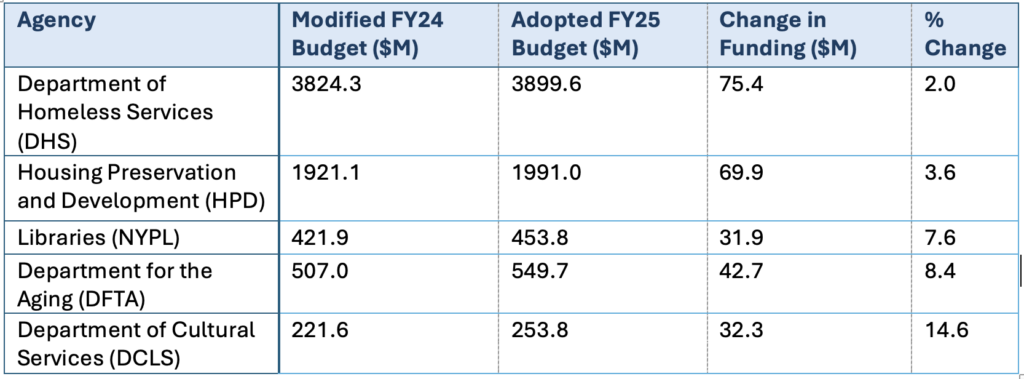
Yet, despite the importance of these restorations, most of the city’s human service agencies baseline funding is lower than last year’s spending levels.
While the $112.4 B budget represents an increase of 5% over the FY24 adopted budget, looking at how much was actually spent last year tells a different story. In this analysis, we compare the FY25 adopted budget with the FY24 modified budget, which reflects the most up to date estimate of actual expenditures in FY24. When comparing the FY25 adopted budget to FY24 spending, the FY25 adopted budget in fact shows a 2.5% reduction in funding year-over-year, with some human service agencies facing budget reductions of over 15%.
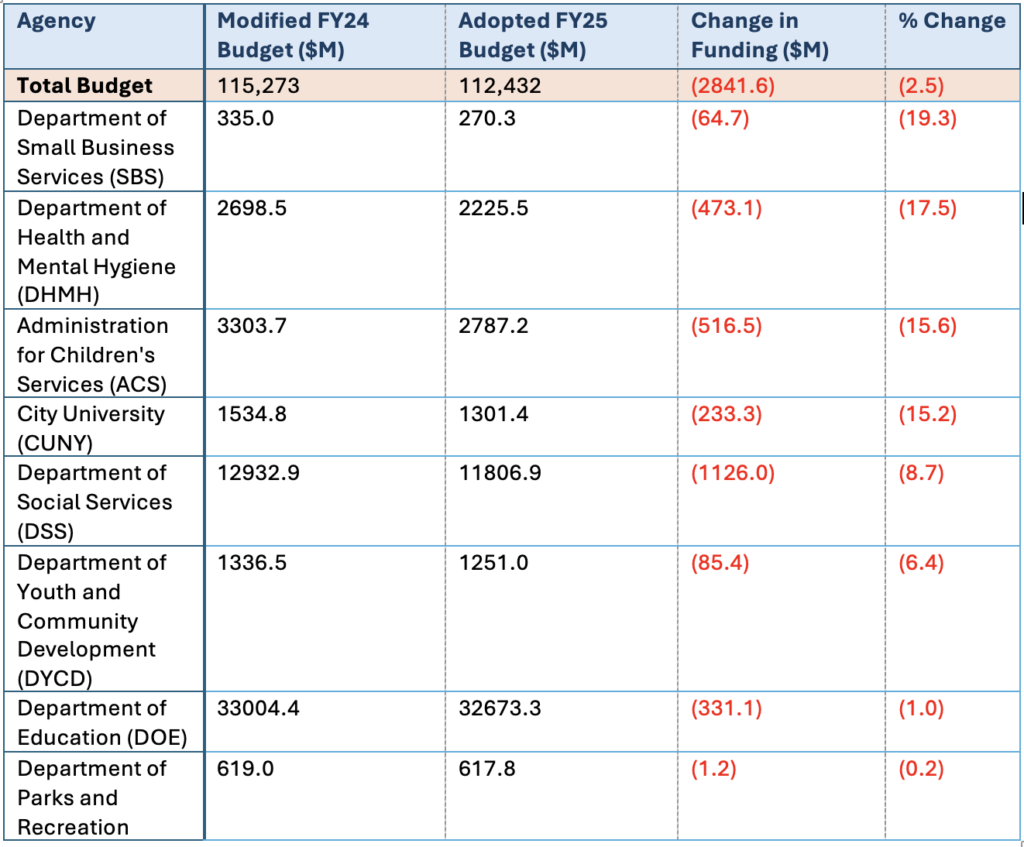
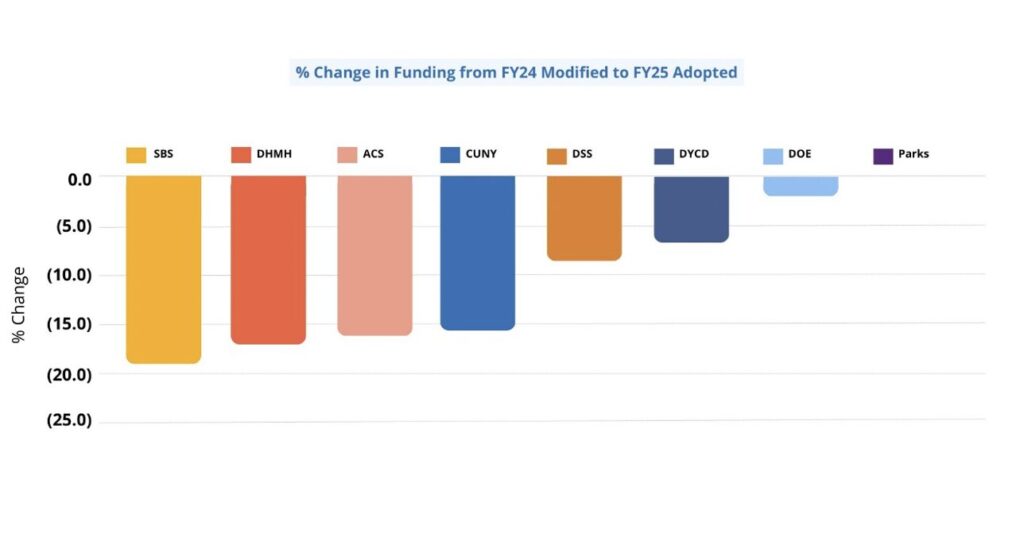
These shortfalls reflect the practice of continually underbudgeting expenses. Adopted budgets regularly do not meet known needs and expenses. Instead, Administrations often rely on the modified budget process, when tax revenue projections are updated, to allocate additional funding for needs. But even with the opportunity to secure additional funding, uncertain funding levels undermine efficient budgeting for agency operations because agencies are unsure about the amount of additional funding that will be secured, hampering their ability to plan effectively for the fiscal year.
Underbudgeting and Under Staffing: Budget impacts on administration
The practice of underbudgeting as seen in FY25’s budget, compounds complex, administrative challenges, in particular staffing. Municipal staff are the backbone of government. They provide direct services, process applications for assistance, and ensure the operation and strategic direction of its services. To this end, agency staffing levels have a direct impact on the quality and timeliness of services available to New Yorkers.
Over the past budget cycle, agency staffing has suffered with hiring freezes and vacancy reductions instituted in the name of fiscal responsibility. From delivering meals to older adults, to processing Cash Assistance applications, the resulting shortage of municipal workers has touched almost every aspect of life in the city. In response to this crisis, we were pleased to see the Mayor end the hiring freeze and announce the new ‘Jobs NYC’ initiative. The new initiative includes strategies to help fill these vacancies and there was anticipation that this modestly increased staffing would be reflected in the FY25 budget. However, despite the promise of this new initiative, there are further staffing reductions proposed across key agencies. Our analysis of agencies relevant to the human services sector shows that only 3 agencies project an increase in staff, while 10 others experience staffing reductions. These staffing changes should be considered in light of increasing demand for city services, such as processing applications for income supports and the city’s legal obligation to reduce classroom sizes.
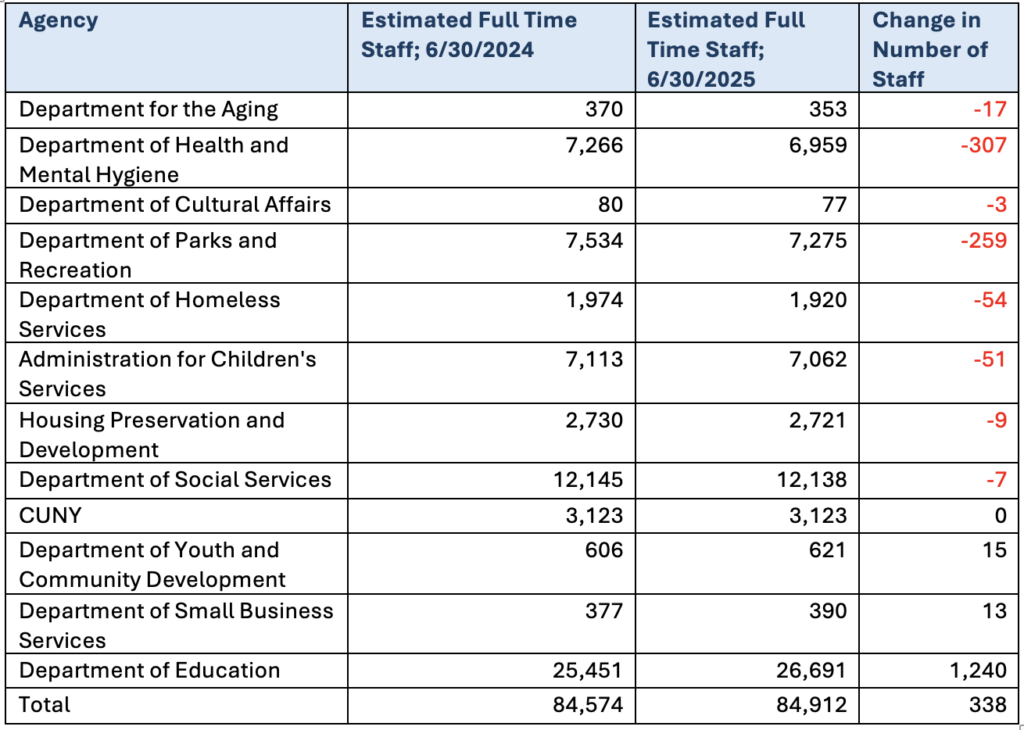
Looking closer at the agencies expecting staffing reductions reveals that the Department for the Aging (DFTA), and the Department of Health and Mental Hygiene (DHMH) are expecting the largest proportional decrease in their staffing levels. These agencies face a staffing reduction of 4.6% and 4.2% respectively.
These staffing cuts will hurt the City’s ability to meet the growing need for services. For example, DFTA must meet the growing needs of the population of adults ages 65 and older. In New York State, this population is expected to increase by over 25% between 2021 and 2040. Without proper funding, it will become more difficult to remain a life-long New Yorker and enjoy all the benefits of aging in place.

Moreover, it should be noted that staffing reductions in the FY25 budget do not capture the extent of city workforce shortages. City workforce remains below pre-pandemic levels, worsened by the hiring freeze and cuts in the PEG.
Impact on contracted workforce
The budget not only affects municipal workers but also workers from human services organizations who hold contracts with the city.
We were pleased earlier this year when the Mayor announced a long-awaited cost-of-living adjustment for our city’s vital human services workers. Over the next three years, the city’s budget will see a nearly 9.27% increase in wages for human services workers contracted by the city.
While we celebrate the impact of this announcement, we know that the work is far from over. Human services workers play a vital role in serving millions of New Yorkers daily and deserve compensation that reflects the value they bring to the city. They are the backbone of childcare centers, food pantries, shelters, domestic violence shelters, and clinics across our state. Yet, their median annual wages and benefits lag those of comparable positions in the government and private sectors by 20 to 35 percent. Alarmingly, two-thirds of full-time human services workers earned below the city’s near-poverty threshold in 2019. And while we support any movement to reduce the systemic disinvestment and underfunding of this sector, this increase still pales in comparison to agreements the city reached with its unionized workforce, such as the 8-year, 28.25% pay deal for NYPD officers last year. FPWA will continue to demand that human services workers are valued and receive wages that not only reflect their value to the city, but also provide these vital workers with salaries that provide them with economic security.
This should not be a fight that human services workers enter every three years. We call on the city to embed cost-of-living pay increases in human services contracts.
We remain steadfast in its commitment to ensuring that individuals with low incomes have the means to thrive and build assets, while advocating for an equitable, adequately funded human services sector that meets the needs of all New Yorkers.
Salary parity for Childcare Workers
Access to quality, affordable childcare is not only essential for the economic well-being of families in New York City, but it is also essential for the economy and our city, as a whole. But more than 80% of families with children under 5 are unable to afford childcare in New York City, and in 2022 alone, the city is estimated to have lost $23 billion in economic activity because of parents leaving the workforce or downshifting careers to meet childcare needs. Childcare workers, who are almost entirely women and are disproportionately women of color, continue to be severely underpaid and undervalued despite the vital work they do each day. The average wage for childcare workers in New York State is just $35,190, one of the lowest among all professions. In fact, 98% of occupations in New York City pay more than childcare.
This is why we advocated for the city to include funding in this year’s budget to provide all members of the childcare workforce compensation parity with similar positions in the public school system. However, the FY25 budget falls short of making this a reality and given that the state budget also failed to provide long-term support for the childcare workforce, this crisis will continue.
Conclusion
Overall, while the FY25 adopted budget is large, many budget cuts were not fully restored from the last fiscal year, leaving New Yorker’s needs unmet. In this light, we believe the budget is largely a missed opportunity to advance economic security in New York City.

The rest of this analysis highlights the impact of the FY25 budget changes on specific programs through the lens of economic security for all New Yorkers – both wins and losses.
Click the icons at the top of the page to read more about how the Budget impacts different aspects of New Yorker’ lives.
Stay in Touch
Join our network and learn about FPWA events and news.
All rights reserved.
LEARN MORE
ABOUT FPWA
GET INVOLVED
